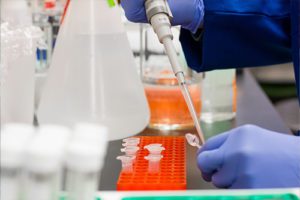Authors: Jeffrey Steele | Source: Forbes
The last five years have seen unprecedented growth within the life science sector. Tech advancements, new products and capital infusions from both public and private sectors have all helped fuel the record-breaking expansion. According to Cushman & Wakefield’s Q1 2022 Life Sciences Sector North America Update, sector growth has directly driven burgeoning demand for laboratory space in life science hubs. These include San Francisco, Boston, San Diego and Seattle, as well as emerging centers such as New York City, Los Angeles, Chicago, Philadelphia, Denver and suburban D.C.
Some $70 billion of private equity capital and public National Institutes of Health (NIH) funding was injected into North American life sciences-related companies in 2020. That figure rose to a record $78 billion in 2021, according to the report.
The expansion means simply building new life science centers has not been sufficient. Also needed has been a transformation of current commercial real estate. “It’s safe to predict the demand for commercial real estate conversions for the use of life science centers will continue to rise in 2022,” says Wan C. Leung, AIA, principal at New York City, N.Y.-based full-service architectural and design firm FCA.
Grasping obstacles
The reason: The need for expedited advances in medicine and healthcare. Retrofits of buildings can save significant time and money when compared to the logistics of new construction. But they are not without their own set of risks and challenges. “The key to a successful office conversion for life science occupancy is going into the project with the understanding and anticipation of these particular obstacles,” Leung says.
When getting ready to convert underutilized office real estate into life science centers, it’s essential to factor in the lead time needed to design and remodel the space, he adds. The lead time will be determined by the extent of improvements that must be made to the base building, as well as the existing square footage and intended use and nature of enhancements to the premises. “Life science buildings can generally be broken down into three different readiness categories,” Leung says, ticking off minimal, moderate and maximal. “It is critical a potential tenant understands the true level of preparedness of each building it is considering before moving forward.”
Readiness levels
The lowest level, or minimal readiness, is also called “Research and Development Friendly,” The structure’s bones are essentially sound and can accommodate many of the requirements for R&D uses. But between some and all of the required building infrastructure and the laboratory suite must be designed and constructed.
The next level, moderate readiness, can be described as “R&D Ready.” In existence are the structure’s central utilities and infrastructure. In fact, everything outside the suite to be occupied by the tenant is completed and ready for tenant move-in. However, the R&D suite or space must be designed and built to the tenant’s specific requirements.
The highest level is maximal readiness, sometimes described as “Plug and Play.” In this level, the individual suites to be occupied by tenants are fully built out and furnished. They are also ready immediately for tenant occupancy and use.
Build it
The insatiable appetite for state-of-the-art laboratory space by start-ups and early-stage biotech companies can be summarized by the immortal line from a classic baseball movie: “If you build it, they will come.”
In regional centers with access to university and med center resources, entrepreneurial attitudes of researchers from academia drive ever-increasing demand for wet, dry and cGMP facilities, Leung explains. “Though these entities tend to occupy smaller footprints, the quantity of related companies require flexible leasing arrangements and facilities that can perhaps accommodate a greater turnover rate,” he observes.
He cites SUNY Downstate Incubators at BioBAT, BioTech and Tech@710, providing about 400,000 square feet of laboratory space. These are mostly occupied by short-term groups seeking affordable space and willing to wait to enter. “The unknown, however, is whether exit-stage companies can drive additional office space conversions to more profitable laboratory space and become longer-term occupants, or whether these move on to more permanent and privately owned space,” he says
This article was written by Jeffrey Steele from Forbes and was legally licensed through the Industry Dive Content Marketplace. Please direct all licensing questions to [email protected].
